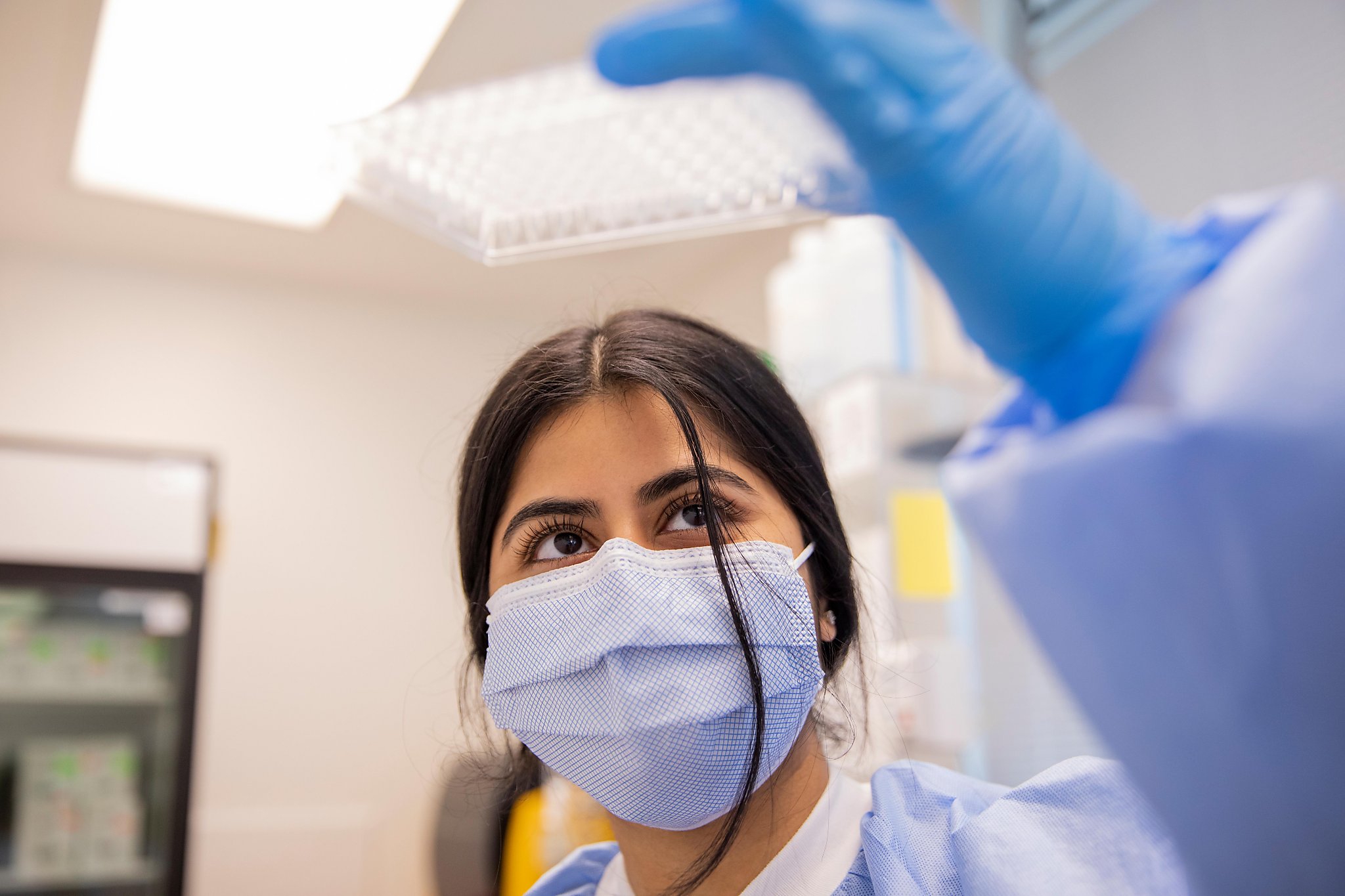A new subvariant of the omicron variant of COVID-19 — BA.2, or “stealth” omicron — has been detected in the Bay Area, health officials said.
Little is known so far about how contagious the subvariant is, experts said, but people who are vaccinated and boosted shouldn’t be worried.
“If you’re vaccinated, and particularly if you’re boosted, I wouldn’t be worried about anything at this moment,” said Dr. Peter Chin-Hong, an infectious disease specialist at UCSF said “You won’t get super sick, no matter if pi or ro or sigma or whatever new variant comes.”
Two cases of the BA.2 variant were identified in Santa Clara County this week, Dr. Sara Cody, the public health director for Santa Clara County said Tuesday. But what that means for the county is still unknown, she added.
“So far we don’t really know how it behaves. My guess is it’s probably going to behave like the dominant omicron variant,” Cody said. “But we’ll see,” adding that she expects to learn more in the coming days and weeks.
California has identified 13 cases of BA.2 so far, state officials said Wednesday.
Early data analysis on BA.2 in Denmark from the Pandemic Prevention Institute, suggests that the subvariant may be able to out-compete the original omicron strain. Still, there is no evidence that the subvariant is able to evade immunity from omicron or that it causes more severe disease.
“There is no evidence that the BA.2 variant causes more disease, but it must be more contagious,” Danish Health Minister Magnus Heunicke said in a news conference Wednesday.
Dr. George Rutherford, an epidemiologist at UCSF, said he doesn’t think that BA.2 will overtake the original omicron and drive another huge wave of cases.
“The bottom line is, viruses mutate, and we’re going to be dealing with variants all the time,” he said. “I think we’re in good shape. If there was some wholesale change, then that’s another question. But for right now, I think we’re just watching viral evolution in action.”
Many are referring to the subvariant as “stealth” omicron — not because the variant cannot be detected by COVID tests, but because it’s not always recognized as omicron, experts said.
Variant sequences of the original version of omicron includes “a deletion in the S gene,” according to the World Health Organization, a genetic feature used to quickly differentiate the omicron variant from delta. The BA.2 subvariant, however, does not have this deletion, the WHO said in a brief on the subvariant.
That means that systems screening for omicron could miss BA.2, WHO said. Additional sequencing is needed to determine if you have the subvariant, Chin-Hong explained.
“The test will still say it’s positive if you have COVID, but that it’s not omicron,” Chin-Hong explained. “It’s not that you have COVID and you don’t know you have COVID.”
For now, the presence of the subvariant locally is another curveball during a pandemic replete with them.
Cody said that “the greatest challenge” of the pandemic may be learning to cope with the unknown and adapt when necessary.
“The reality is, we have to continue to live with quite a bit of uncertainty, because we just don’t know,” she said.
“We can’t quite see around every corner. We don’t know what’s going to come, and we’re quite tired,” Cody said. “And so this is when we have to pull together and rededicate ourselves to be adaptable and flexible and prepared.”
Danielle Echeverria is a San Francisco Chronicle staff writer. Email: danielle.echeverria@sfchronicle.com Twitter: @DanielleEchev





